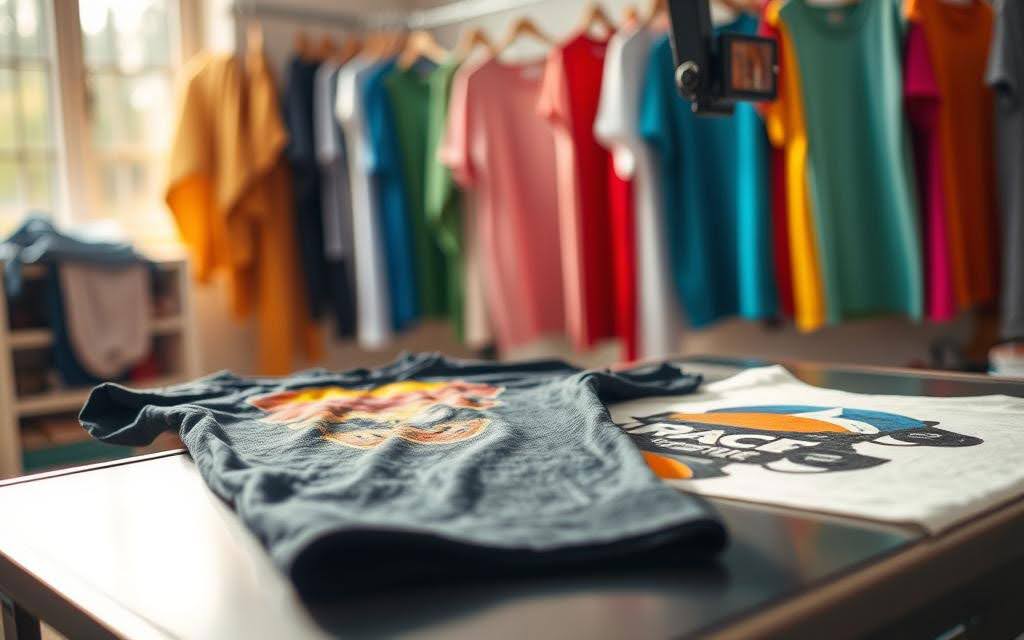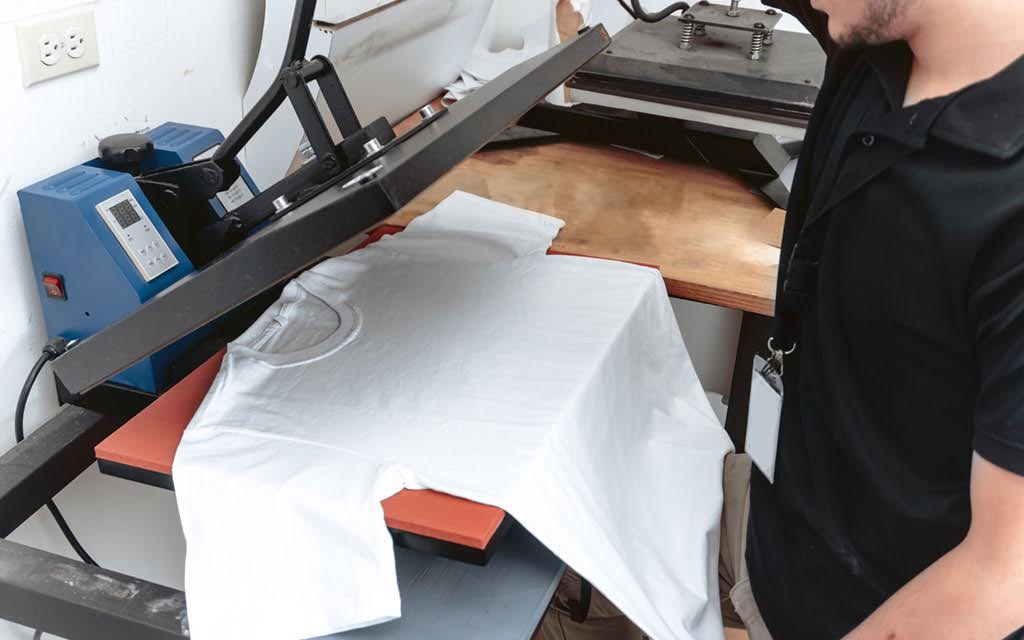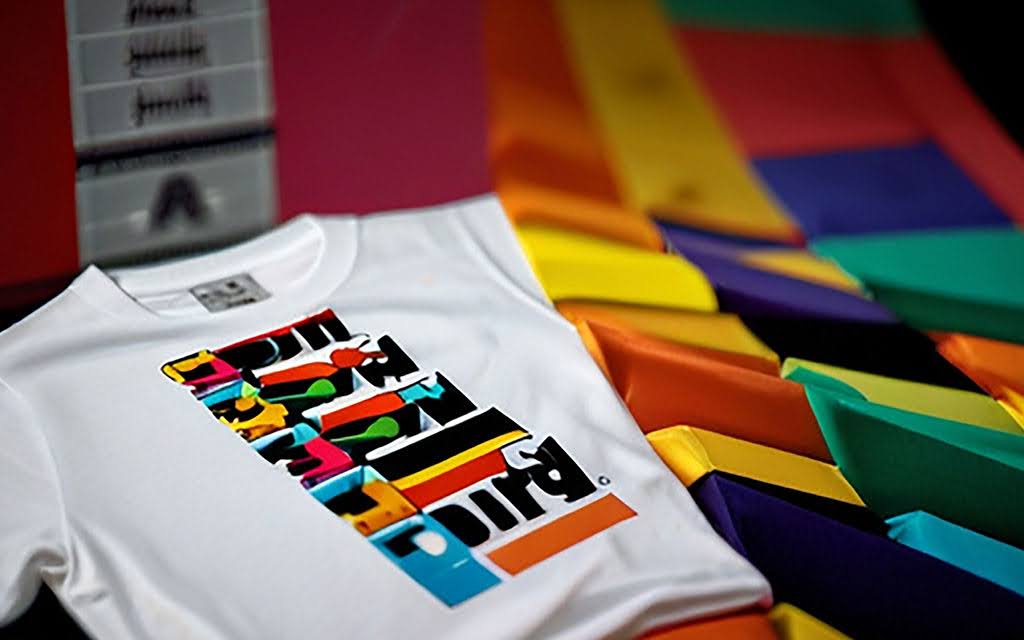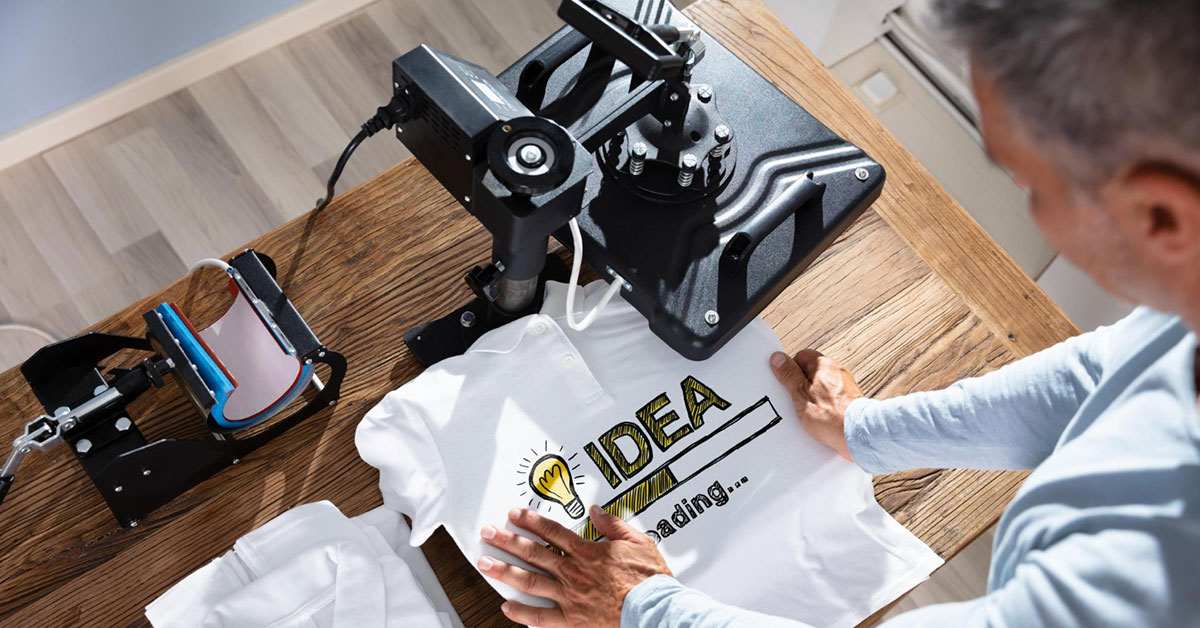Heat transfer printing has become a cornerstone of the custom apparel industry, with nearly 70% of custom apparel shops in the United States now offering this versatile printing process that transforms how businesses approach small runs and unique designs. Understanding what is heat transfer printing begins with recognizing its fundamental principle: using heat and pressure to transfer designs from specialized materials onto various surfaces through controlled application of thermal energy.
This printing technology works exceptionally well across multiple substrates including fabrics, ceramics, metal, and hard surfaces, delivering bright and long-lasting results that resist fading and cracking over time. The majority of heat transfer applications utilize common methods including sublimation printing, heat transfer vinyl (HTV), screen-printed plastisol transfers, and Direct-to-Film (DTF), each offering distinct advantages for different applications.
The setup proves simpler and less expensive than methods like screen printing, making it accessible for both home crafters and professional operations. A heat press machine applies the precise temperature, time, and pressure needed to make designs permanently adhere to surfaces, while beginners can often start with basic heat transfer printing projects using a household iron before investing in professional equipment.
Key Takeaways
- Heat transfer printing uses controlled heat and pressure to customize apparel and hard goods with professional results
- Main types of heat transfer printing include sublimation, HTV, plastisol transfers, and DTF printing
- Proper heat press machine equipment and matching transfer materials ensure durable, washable results
- This printing method offers cost-effective solutions for short runs compared to screen printing
- Home projects are possible, but professional equipment guarantees consistency and longevity
Table of Contents
What Is Heat Transfer Printing
What is heat transfer printing represents a printing technique that moves designs from specialized transfer paper or vinyl materials to fabrics and other substrates through the application of controlled heat and pressure. This transfer process excels particularly well for small orders and custom designs where traditional printing methods might prove too expensive or impractical for businesses seeking flexibility.
Definition and Core Principle
The fundamental concept behind this printing technology involves using a heat press to transfer a design onto substrates after the design is printed or cut onto specialized materials. The transfer process begins when designs are prepared on special transfer paper or vinyl, then carefully positioned on the target fabric before being pressed under specific conditions that activate the adhesive properties.
Many systems utilize special transfer inks that melt and bond permanently with fabric fibers during the heating process, which allows for incredibly detailed images and complex multi-color designs. The heat transfer printing process uses heat and pressure to ensure these materials become permanently integrated with the substrate rather than simply sitting on the surface.
Brief History and Evolution
The origins of thermal transfer printing trace back to the 18th century when craftspeople began using heat on heated plates to apply decorative images to various materials. The 1950s and 1960s saw iron-on decals gain popularity in the crafting world, making decorative transfers accessible to home users for the first time through simple heat transfer applications.
The 1980s marked a significant expansion as custom T-shirt businesses embraced this printing process for personalized apparel, while the 1990s brought full-color transfer capabilities through digital printing advances. Today’s methods incorporate faster processing times, more precise temperature control, and advanced ink and special transfer paper formulations that deliver superior results across various applications.

How It Compares to Other Printing Techniques
When evaluating t shirt printing methods pros and cons, heat transfer printing stands out against screen printing, DTG, and heat transfer vs embroidery for its lower setup costs and remarkable flexibility. This printing technology proves particularly well-suited for small orders and custom work where screen printing involves pressing ink through screens with high setup costs that would be prohibitive for smaller runs.
Vinyl transfers excel with simple designs and solid colors, while sublimation printing creates a soft, dye-infused appearance on polyester substrates without the raised texture. Screen printing remains superior for large batches requiring vibrant colors, but heat transfer printing offers unmatched versatility for mixed orders and quick turnarounds when businesses need rapid production capabilities.
Types of Heat Transfer Printing and When to Use Each Method
Selecting the appropriate heat transfer printing method depends on several factors including design complexity, fabric type, budget constraints, and production volume. Each printing method offers unique strengths and limitations that make them suitable for specific applications, and understanding these different types of heat transfer helps businesses make informed decisions.
Method | Best Applications | Fabric Compatibility | Texture Feel | Press Time |
Heat Transfer Vinyl | Single-color names, numbers, simple logos | Most fabrics, excellent on cotton blends | Slightly raised, durable | 45-60 seconds |
Sublimation Printing | Full-color photos, all-over prints | Polyester or polyester-coated only | No-feel, smooth finish | 25-30 seconds |
Screen-printed Plastisol | Vibrant solid colors, specialty inks | Wide range of textiles and blends | Textured, traditional feel | Varies by specifications |
Direct-to-Film (DTF) | Photorealistic prints, no minimums | Light and dark fabrics, multiple fibers | Slightly rubbery, flexible | Moderate cure and press time |
Vinyl Heat Transfers and Heat Transfer Vinyl (HTV)
Heat transfer vinyl types encompass various materials created by cutting designs from specialized rolls or sheets using precision cutting tools like Cricut or xTool machines. The cut design then gets weeded to remove excess material before being heat pressed onto the garment using a heat press machine with controlled temperature and timing.
Heat transfer vinyl, typically manufactured from durable polyurethane, creates a slightly raised texture that holds up exceptionally well through repeated washing cycles. Printable HTV variations allow for multi-color designs by combining cutting and printing processes, with the design onto substrate requiring approximately 45-60 seconds of pressing time for proper adhesion when using a heat press.

Sublimation Printing and Dye-Sublimation Transfers
Sublimation printing utilizes specialized inks and transfer paper in a unique printing process where heat and pressure transforms the ink directly from solid to gas, allowing it to penetrate and bond with polyester fibers at the molecular level. This creates completely smooth prints that become part of the fabric rather than sitting on top, demonstrating how printing works at the molecular level.
This method proves ideal for full-color designs, photographic reproductions, and all-over prints on polyester or specially coated substrates. Professional equipment like Epson SureColor printers typically handles the printing phase, while heat transfer times usually range from 25-30 seconds depending on fabric weight and design coverage when transferring a design.
Screen-Printed Plastisol Transfers
Screen-printed plastisol transfers involve creating individual screens for each color in the design and pushing plastisol ink through the mesh onto transfer film. Each color requires its own screen, making this method more expensive for small orders but highly effective for larger production runs where screen printing economics make sense.
Plastisol creates a distinctive textured, durable finish that delivers bold, vibrant colors with excellent opacity on both light and dark fabrics. This method excels for consistent color reproduction across different materials and maintains the traditional screen printed aesthetic that many customers prefer when comparing different types of heat transfer options.
Direct-to-Film (DTF) Transfers
Understanding direct to film printing pros and cons reveals a method that involves printing CMYK images directly onto PET film before coating with adhesive powder and curing. This approach works effectively on both light and dark fabrics without requiring separate treatments or color adjustments, making it versatile for various heat transfer printing projects.
DTF utilizes pigment or water-based inks to produce prints with a slightly rubbery feel that remains flexible and durable. The method proves particularly valuable for custom apparel, sportswear, and accessories where complex, photorealistic designs need to work across various fabric types and colors through successful heat transfer applications.
Essential Equipment, Materials, and Setup for Successful Transfers
Achieving consistent, professional results requires carefully selected equipment and properly organized workspace conditions. The right combination of heat press machine, printer systems, and matching materials ensures that each transfer bonds permanently while maintaining color accuracy and durability through repeated use and washing cycles.
Heat Press Machines and Types
Heat presses come in various configurations including clamshell, swing-away, hybrid, and cylinder models, each designed for specific applications and production needs. Cylinder presses work best for curved items like mugs and bottles, while flat presses handle most garment and flat substrate applications effectively when applying heat and pressure.
The platen of the heat press size selection depends on your typical project dimensions and workspace constraints. While a household iron can handle basic vinyl projects in emergencies, a commercial heat press machine provides the even heat distribution and consistent pressure required for professional results and reliable adhesion when using a heat press for production work.
Printers and Inks for Each Method
Sublimation printing requires specialized printers equipped with sublimation inks, with Epson SureColor models frequently recommended for their reliability and color accuracy. DTF printing needs printers capable of handling pigment or specialty DTF inks that cure properly with adhesive powder applications during the heat transfer printing process.
Screen printing operations use dedicated screen printers with plastisol inks for durability and vibrant colors. Heat transfer vinyl projects can utilize standard inkjet printers for printable versions, while cut-only vinyl eliminates the need for color printing entirely, simplifying the printing process significantly.
Transfer Papers, Films, and Vinyl
Selecting the correct transfer paper that matches your ink system ensures proper adhesion and color transfer during pressing. Heat transfer paper features polymer coatings designed to release printed designs when heated, while PET transfer film serves DTF applications with specialized surface properties that work with adhesive powder systems.
Sublimation paper works exclusively with sublimation inks for polyester applications, while heat transfer vinyl comes in both sheet and roll formats for cut designs plus printable versions that accept inkjet output for complex multi-color projects requiring special transfer paper compatibility.
Auxiliary Supplies and Workspace Setup
Equipment Category | Purpose | Essential Items |
Heat Press Protection | Prevents damage and ensures clean transfers | Teflon sheets, parchment paper, heat pads |
Alignment Tools | Ensures precise placement | Registration marks, rulers, alignment guides |
Cutting Equipment | Prepares vinyl and film materials | Precision cutters, weeding tools, cutting mats |
Workspace Essentials | Supports production efficiency | Clean work surface, adequate lighting, storage |
Maintaining a clean, dust-free workspace proves critical for professional results, as contaminants can create imperfections in finished transfers. Essential accessories like Teflon sheets, heat-resistant tape, and precision alignment tools help protect surfaces while ensuring accurate placement during the printing process and successful heat transfer operations.
Step-by-Step Heat Transfer Printing Process and Best Practices
The heat transfer printing process requires careful attention to design preparation, material selection, substrate preparation, and precise heat press settings to achieve consistently professional results. Following established procedures and maintaining detailed records helps optimize efficiency while minimizing defects and reprints in heat transfer printing projects.
Design Preparation and File Setup
Beginning with high-resolution artwork created in professional software ensures crisp, clean results when transferring a design to physical materials. Vector files provide the best scalability and edge definition, particularly important for cutting applications where the design is printed with precise detail requirements.
For vinyl and certain iron-on workflows, remember to mirror the image before output since the design will be flipped during application. Multi-color screen printing or DTF jobs require registration marks added during the design phase to ensure proper alignment throughout the printing process when multiple colors must align perfectly.
Printing and Cutting the Transfer
Choosing the appropriate output method depends entirely on your selected transfer type and intended application. Sublimation printing requires specialized sublimation paper, DTF uses PET film, while printable vinyl needs compatible heat transfer paper designed for inkjet systems and specific ink compatibility requirements.
Heat transfer vinyl cutting requires precision equipment like the xTool M1 Ultra for clean edges and detailed work, followed by careful weeding to remove excess material without damaging fine details. DTF applications need adhesive powder applied and cured according to manufacturer specifications before the heat press is used for final application.
Substrate Preparation and Pre-Pressing
Pre-washing garments removes manufacturing finishes and residual chemicals that can interfere with adhesion, while also eliminating shrinkage issues that might affect final fit. Substrate compatibility checking ensures optimal results: polyester works for sublimation printing, while coated metals and ceramics often require special primers for proper bonding.
Pre-pressing the target area removes moisture and wrinkles while warming the surface using heat and pressure for improved transfer uptake and adhesion. Hard substrates need thorough cleaning and may require specialized coatings to achieve proper adhesion and color vibrancy when heat pressed onto the material.
Heat Press Settings: Temperature, Time, Pressure
Starting with manufacturer recommendations provides a baseline, but maintaining a detailed log of actual settings used for different materials and transfer types allows for quick optimization and consistent results across projects. The heat transfer printing process requires precise control of all variables to ensure successful heat transfer printing outcomes.
Transfer Type | Temperature Range | Time Range | Pressure Notes |
Inkjet Transfers | 350-375°F | 14-18 seconds | Medium pressure |
Sublimation Printing | 375-400°F | 25-30 seconds | Medium pressure |
Heat Transfer Vinyl | 305-320°F | 45-60 seconds | Firm pressure |
DTF Transfers | 300-320°F | Variable | Light to medium pressure |
Thicker fabrics often require reduced pressure and slightly extended time to achieve proper penetration without crushing fabric texture. The bottom platen of the heat press must make even contact, while choosing between warm and cold peel depends on transfer chemistry and manufacturer specifications for optimal results.

Quality Control, Common Problems and Troubleshooting Strategies
Successful heat transfer printing depends on implementing consistent quality control procedures and developing systematic approaches to identifying and resolving common issues. Operators should maintain detailed records of heat press settings, material combinations, and results to build a knowledge base for troubleshooting and optimization of heat transfer printing projects.
Common Issues and Solutions
Fading, cracking, and poor washability typically result from incorrect material selection or inadequate curing conditions. Using heat transfer materials specifically designed for durability and following proper heat transfer printing protocols improves wash resistance significantly, while understanding ink and transfer paper compatibility prevents premature failure.
Poor adhesion occurs when you peel off the transfer paper too early or use incorrect heat press settings for the specific material combination. The transfer paper is then placed properly and heat pressed onto substrate with appropriate time and temperature to ensure use heat transfer printing methods deliver lasting results.
Color accuracy problems in multi-color prints require implementing color management workflows and understanding how different ink and special transfer materials interact. Using heat transfer methods with proper registration and testing prevents costly reprints while ensuring customer satisfaction with color matching expectations.
Advantages, Disadvantages, and Business Applications
Heat transfer printing offers significant advantages for small businesses and independent creators, primarily through its low startup costs compared to screen printing operations. Transfer printing is a popular choice for new businesses that can begin operations with minimal capital investment while maintaining the flexibility to handle diverse order types and custom requests.
The advantages of heat transfer include working effectively with detailed artwork and complex logos while functioning across multiple product categories including apparel, ceramics, metals, and wood surfaces. High-quality transfer materials provide excellent durability and visual appeal when proper techniques and materials are used consistently in production workflows.
However, understanding the disadvantages of heat transfer printing helps set appropriate expectations and choose optimal applications. Some methods create thicker finishes that may affect garment breathability, while sublimation printing limits substrate options to polyester or specially coated materials, which constrains material choices significantly.
Benefits of heat transfer include rapid turnaround times, minimal setup requirements, and the ability to handle single-item orders profitably. When comparing sublimation vs embroidery for specific applications, heat transfer printing often provides more cost-effective solutions for photographic designs and complex graphics that would be difficult to embroider.
Business applications span custom apparel shops, sports team outfitting, promotional product companies, and small-scale manufacturers focusing on personalized items. Understanding heat transfer printing allows businesses to use heat transfer printing effectively across various market segments while which is better dtg or dtf considerations help optimize method selection for specific applications.
To achieve long-term success, businesses should maintain detailed production records, continuously test new materials and techniques, and invest in quality equipment that delivers consistent results. This approach ensures customer satisfaction and builds the reputation necessary for sustainable growth in the competitive custom printing market where heat transfer printing is a versatile solution for diverse customer needs.





